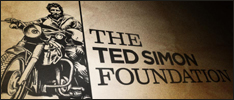We had a day of rest in Puno where we booked up for another boat trip out on to the lake to see the famous floating reed islands – the Uros – and on to Taquile one of the bigger Peruvian islands. It was a great way to unwind after all the uncertainty and stress of getting past Ilave. The reed islands are simply huge beds of Totora reeds upon which the local people have built homesteads. There are two stories of how they came to live this way. One has them fleeing the persecution of the Incas, who couldn’t follow them out on to the lake and the other has them moving out here to avoid paying taxes to the Spaniards. The reeds are incredibly versatile with a tasty edible root (we tried some) and apart from providing the bedding for the islands, they are also used to construct the houses, furnishings and even boats and sailing craft used on the lake. The down side to living on this water is rheumatism by your late twenties, although the roots are even used against this. The visit to the islands was fascinating and we took a trip on one of the reed boats. The locals were all dressed very colourfully with lots of souvenirs on offer as, along with fishing in the lake, tourism is now their main source of income.
On to Taquile, where we had an excellent lunch of Pejerrey (King Fish) caught from the lake, before having a mooch around the island and its main town. The people here are descended from Spanish immigrants and still wear traditional Castilian dress. Once again the women are out doing all the manual work, whilst the men sit in the sun and knit all day, making fabulous woolly jumpers, hats and gloves to sell to the tourists! We enjoyed a sunny day with excellent company on our boat and Menelaus, a local from Puno, was a superb guide for the day, full of anecdotes and stories on island life and the flora and fauna of the area.
Back in Puno we found out that the bridge at Ilave had re-opened the day after our river trials but a horror story awaited. The disturbance at Ilave we had witnessed on Monday had certainly resolved the problem with the mayor. The locals had taken him out in the Plaza, convened a ‘Kangaroo Court’ and sentenced him to die, whereupon he was literally beaten to death and his body taken down & thrown off the bridge. The local police were powerless to act, held under siege in the local station by the mob. They had used up all their riot ammunition – tear gas, rubber bullets etc and had reached the point where they were ready to use live ammo on the angry crowds outside should they try and breach the walls. 400 National riot police appeared the next day, armed to the teeth and ready to kill, and order was restored. The Peruvians we spoke to in Puno and later in Cusco where horrified and a wave of revulsion spread around the country, with flags on public buildings and at our hotel flown at half mast in respect for the dead Alcalde. We asked around to see if he had been a bad man in some way but it seems he was no worse or corrupt than any other petty official and certainly did not deserve to die in this way. We were both really saddened by this news and it cast a dark shadow on our trip. Having visited the islands it was now time to take our leave of Lake Titicaca. A good paved road lay ahead to take us to the Inca capital at Cusco, where we were now resolved to walk the 4-day Inca Trail up to Machu Picchu, surely one of the greatest treasures of any visit to South America.








